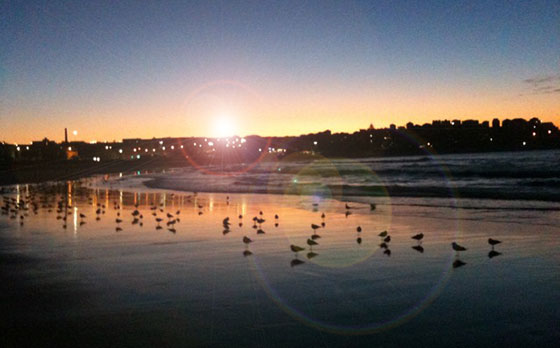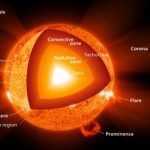Avikal on American / Japanese imperialism, selfies and narcissism

This morning around 5.30 I was running at Bondi Beach as I often do. Some surfers were there along with a few others. At least half of the people walking or sitting were busy with their mobile phones sending messages, taking selfies or chatting.
They all appeared completely oblivious of the beauty surrounding them.
A pretty normal picture these days, as you’ve most probably experienced something similar yourself in recent years.
Perhaps you’ve also noticed the ‘strangeness’ of all these people busy just with their mobile phones. Are these people present with themselves inside? I don’t know and cannot say. Perhaps, even though the vibe is that of absence, there’s a kind of vacuum in the ‘field’.
What I also know from my own experience is that a true state of presence is completely inclusive: no inside and no outside, just ‘this’, here, now.
First, some history
Japan is the country that more than any other has gone through a major collapse of its identity in the last sixty years. Between 1943 and 1945 Japan went from being an incredible military power, cruel and efficient, to being the victim of genocide as atomic bombs exploded in Hiroshima and Nagasaki. This experience completely annihilated the self-image of the Japanese people; they became lost, confused, destroyed in body, heart, mind and soul. Reconstruction took place chiefly by copying Western cultural and economic models. It was their way of redefining the Japanese soul by pragmatically recreating their capacity to survive.
In the sixties, Japan started producing the same products that were made in America and Europe. By copying and improving, the Japanese often made them better and cheaper. The stereotype of the Japanese (as seen by Westerners) was that of worker ants. Later, in the eighties, they were the groups of tourists busy photographing everything they saw as well as themselves in those foreign environments.
Selfies: disconnection of Self
Do you remember how they got teased in Italy? How weird they seemed while walking in Venice or Florence or Rome? Yet they were ahead of us by a few years as they tried to find their souls by creating identities based on images.
Internet was just beginning but the tendency was already starting: “If I don’t know who I am, how can I remedy this deficiency?” Ah yes, the answer! “I can create a photographic trail, an ever longer and complex series of images of myself and the world I find myself living in…”
More recently, thanks to the mass diffusion of cell-phone cameras, the tendency so courageously started by those Japanese tourists has become planetary.
“Wait, how do I feel today? Who am I today?” Ah yes, the remedy! “I can just take a selfie, better two, perhaps even three and I can pose and create myself, and create myself, and create myself… and even believe in it… and perhaps make the other believe too, that I exist…”
Have we perhaps, without noticing it, become exactly what we used to mock?
Personality, the false identity of a social mask, has always been fundamentally just a collection of images, impressions and memory traces fused together in what we love to call ‘my personal story’. Those memories, those images give us a false sense of continuity and identity as defined by events, relationships and situations rather than by the immediate and direct knowing and experience of ‘who I am’.
I get to know myself through the objects of experience, the images I carry inside, and the world made of those objects of which I am also one.
Today, as well as our basic memory, we have also got an endless collection of digital images that we can revisit whenever we like to confirm our sense of existing.
It’s not surprising, then, that the first identity crises involving loss of mobile phones have started appearing…
Narcissism?
If Steve Jobs created and made available on a mass level the hardware to immortalize one’s images, Zuckerberg created the stage where everyone can be the main actor every moment, at any time, independent of source of separation like race, frontiers and religion. The American dream of a perennial performance, a ceaseless show and the possibility of creating an exponentially growing sense of identity is affordable and available to everyone.
Narcissism mutates from individual pathology to social phenomena, inadvertently unmasking the deepest nature of narcissism itself. This is a feature of human behaviour that has never been limited to any specific individual, but is rather the existential reality of the absolute majority of humanity. Narcissism is in fact much more than just the adoration of one’s own image (the most external aspect); it’s a more general symptom of the disconnection (more or less complete) from Spirit.
A self-image is created and needed in order to hide this separation from the Authentic Self, to hide the most radical and painful alienation from one’s own spirit. It’s a self-image that reflects and enforces the tenets of conditioning and original self-betrayal. It’s an image that results from abandoning the awareness of self, adapting to the pressures of family and environment. It’s a self-image that is acceptable and can be recognized. Most of all, it is fixed in time and space and can provide a sense of security in the face of the unrelenting unfoldment of reality. Above all it’s a self-image that, rooted in time, becomes that which I take myself to be.
I then create representations of myself. I share them more and more compulsively and habitually. I feed the hypnosis that I exist and know that I exist through the reflection of the world around me.
Perceptions
The cycle ‘image-posting on social media-reflection’ is what defines my perception of myself and my sense of identity. Similarly, it supports my sense of well-being as I experience relief that I just received six or seven ‘I like’s’, satisfaction that oh, now that’s already nineteen!… smugness for those forty-two… oh yes, they understand and appreciate me!
In the end there’s even a sense of peace! No seeking, no going anywhere, no longer waiting for the next ‘I like’… a sense of calm arises.
Yes, there is this, too: the intelligence of Spirit also manifests through the apparent madness of representations… at least for those who have a minimum of presence and awareness and can recognize what’s happening even when for a short moment there’s no image and no need for mirrors.
Yes, behind the shadow of mass narcissism there is ‘Always and Already’, the immensity of Spirit and the unavoidable, inescapable movement towards the actualization of Being.
Bon voyage, cybernauts!
 Avikal is founder and director of the Integral Being Institute which is active in Europe, Asia and Australia. In his newest books published by O-Books – Freedom to be Yourself and Without a Mask – with the respective, revealing subtitles Mastering the inner judge and Discovering your authentic self – Avikal provides far-seeing insight into his world of training and personal development. Avikal lives in Sydney, Australia. www.integralbeing.com
Avikal is founder and director of the Integral Being Institute which is active in Europe, Asia and Australia. In his newest books published by O-Books – Freedom to be Yourself and Without a Mask – with the respective, revealing subtitles Mastering the inner judge and Discovering your authentic self – Avikal provides far-seeing insight into his world of training and personal development. Avikal lives in Sydney, Australia. www.integralbeing.com




Comments are closed.